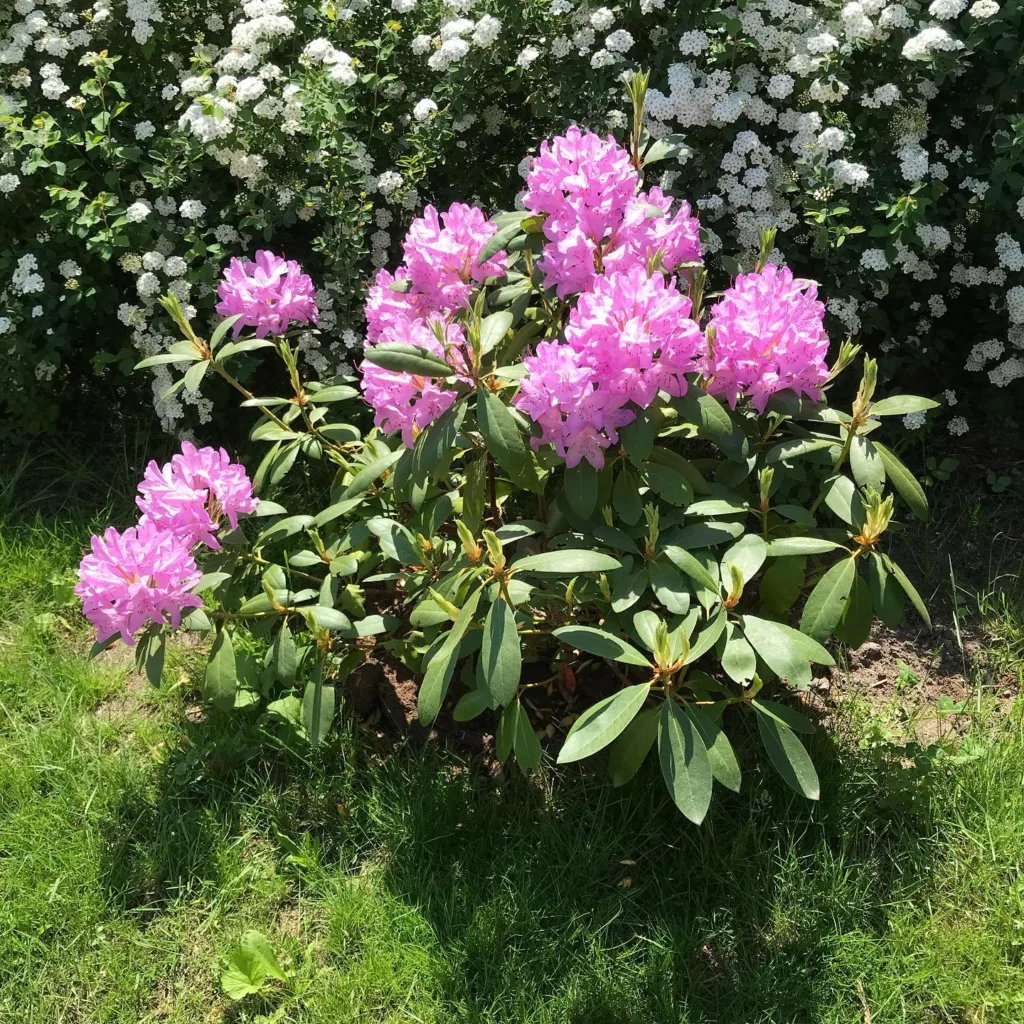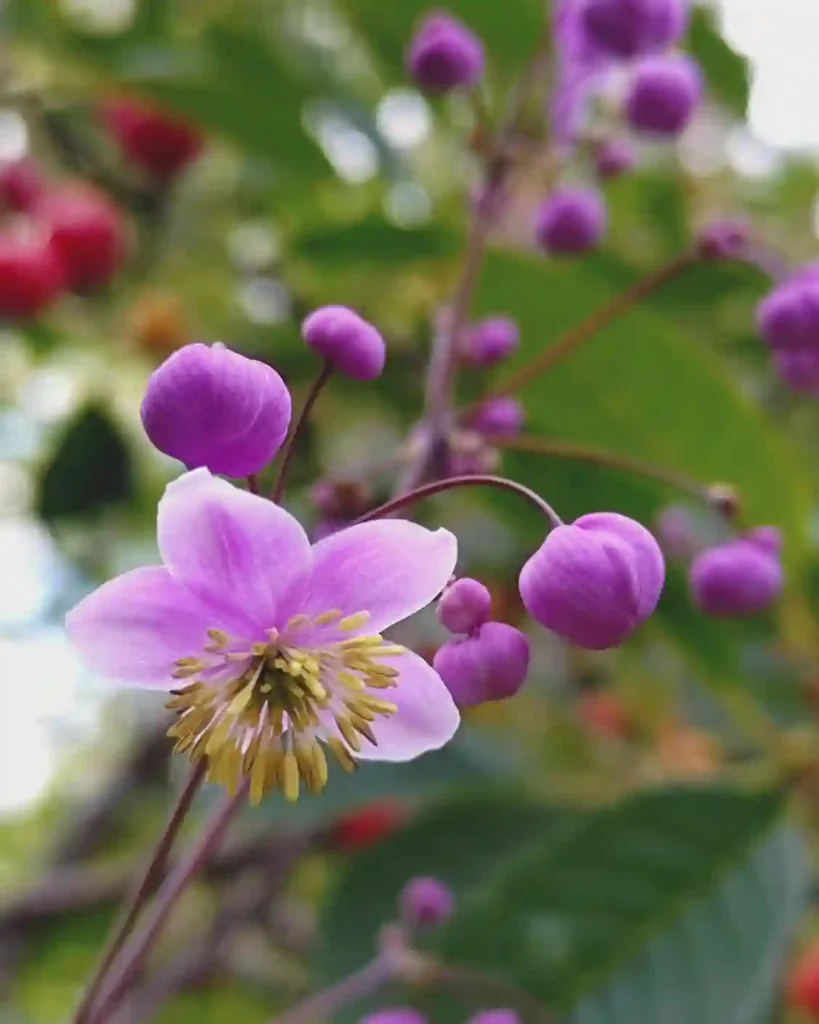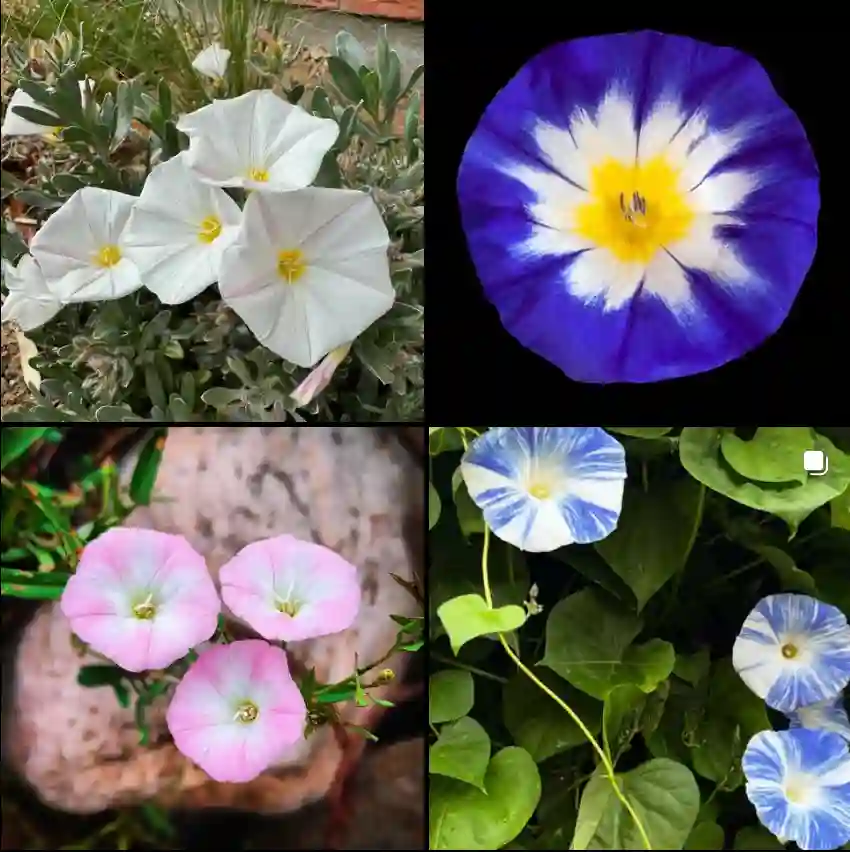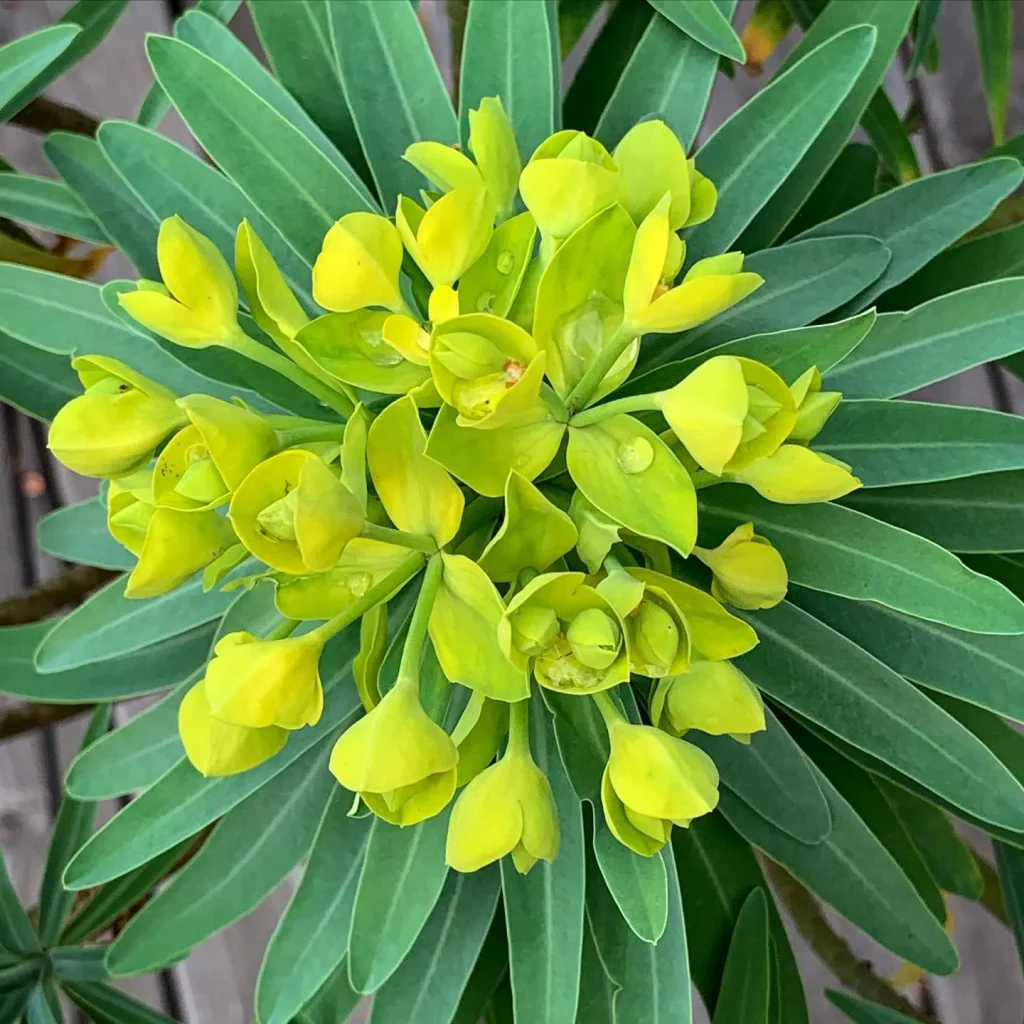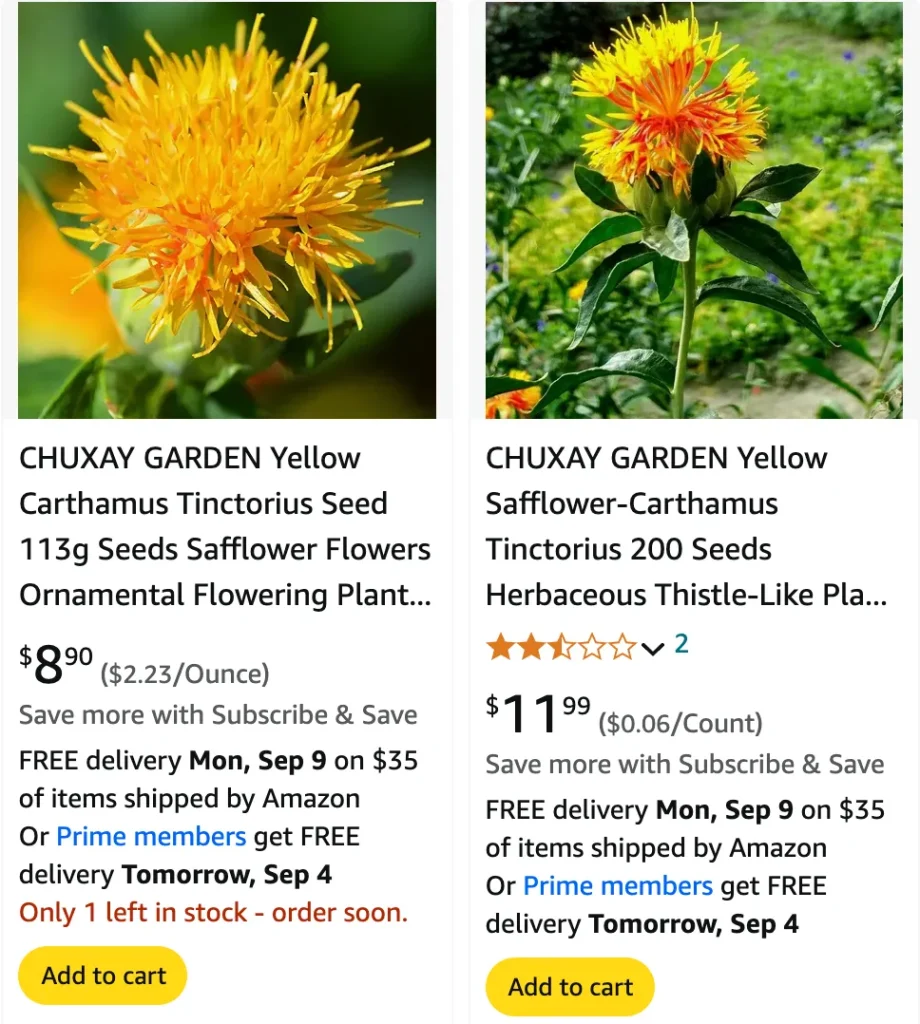
What is Carthamus Tinctorius?
Carthamus Tinctorius, commonly known as safflower, is a vibrant annual plant belonging to the Asteraceae family. Its origins trace back to ancient civilizations in the Middle East and Africa, where it was primarily cultivated for its vivid flowers and oil-rich seeds. The plant’s bright yellow, orange, or red flowers are not just visually striking but have been utilized in traditional medicine and dye production for centuries.
41 Species in Genus Carthamus
What is Carthamus Tinctorius Seed Oil?
Carthamus Tinctorius Seed Oil is derived from the seeds of the safflower plant. This oil is well-regarded for its high content of unsaturated fatty acids, particularly linoleic acid, which makes it a popular choice in both culinary and cosmetic applications. In cooking, it’s valued for its mild flavor and high smoke point, making it suitable for various cooking methods. In skincare, Carthamus Tinctorius Seed Oil is known for its moisturizing and anti-inflammatory properties, helping to improve skin texture and tone.
How to Grow Carthamus Tinctorius?
Growing Carthamus Tinctorius is relatively straightforward, provided you meet its basic needs. Here’s a guide based on my personal experience:
- Soil Preparation: Safflower thrives in well-drained soil with a slightly acidic to neutral pH. It’s essential to ensure good drainage to prevent root rot.
- Planting: Sow seeds directly into the soil after the last frost date, as safflower prefers warm weather. Space seeds about 1 inch apart and cover them lightly with soil. You can also start seeds indoors about 6-8 weeks before the last frost, then transplant them outdoors.
- Watering: Water the plants regularly but avoid overwatering. Safflower is quite drought-tolerant once established. Ensure the soil remains moist but not waterlogged.
- Sunlight: Plant safflower in a location where it receives full sun, ideally 6-8 hours of sunlight per day. It thrives in warm conditions and is quite resilient to heat.
- Maintenance: Regular weeding and occasional fertilization can help boost growth. Safflower is relatively low-maintenance but might benefit from a balanced fertilizer once or twice during the growing season.
How to Care for Carthamus Tinctorius?
Caring for Carthamus Tinctorius involves a few key practices:
- Pruning: Deadhead flowers to encourage more blooms and prevent the plant from self-seeding excessively. This also helps maintain a tidy appearance.
- Pests and Diseases: Safflower is generally pest-resistant but watch out for aphids and fungal diseases. Good air circulation and proper spacing can help mitigate these issues.
- Winter Care: In colder climates, safflower is grown as an annual. However, in warmer regions, it can sometimes reseed itself and return the following year.
Is Carthamus Tinctorius Safe?
Carthamus Tinctorius is generally considered safe. Both the plant and its oil are used in various applications without significant adverse effects. However, if you have allergies to plants in the Asteraceae family, you might experience sensitivities. Always perform a patch test with the oil if you’re trying it for the first time on your skin.
How to Propagate Carthamus Tinctorius?
Propagation of Carthamus Tinctorius is typically done through seeds. Collect seeds from mature flowers in late summer or early fall and store them in a cool, dry place until you’re ready to plant. For starting indoors, sow seeds in seed trays or pots and keep them warm and moist until they germinate.
What to Plant with Carthamus Tinctorius?
Safflower pairs well with a variety of plants. Its bright flowers can complement other warm-colored blooms such as marigolds and zinnias. Additionally, it can be grown alongside herbs like basil and thyme, which can benefit from its drought-resistant nature and help create a visually appealing garden.
Can You Grow Carthamus Tinctorius Indoors?
While Carthamus Tinctorius is primarily grown outdoors due to its size and light requirements, it can be grown indoors if provided with adequate light. Use grow lights to simulate sunlight and ensure the plant has enough space to grow. It may not flower as abundantly indoors as it would in an outdoor garden.
Is Carthamus Tinctorius Toxic?
Carthamus Tinctorius is not known to be toxic to humans or pets. It is widely used in cooking and skincare without significant reports of toxicity. However, as with any plant, it’s wise to avoid ingestion or direct skin contact if you have known sensitivities.
Benefits of Carthamus Tinctorius
Carthamus Tinctorius offers numerous benefits. Its seeds are a source of healthy fats, and its oil is used in cooking for its light flavor and high smoke point. In skincare, it’s praised for its moisturizing and anti-inflammatory properties. Additionally, safflower has been used traditionally in medicine to treat various ailments, though modern uses are more commonly focused on its culinary and cosmetic applications.
Common Problems with Carthamus Tinctorius
The most common issues with Carthamus Tinctorius are related to pests and diseases. Aphids can sometimes infest the plant, and fungal infections may occur if the soil is not well-drained. Regular monitoring and proper care can help prevent these problems. Additionally, the plant might not perform well in overly wet or cold conditions.
Compare with Other Similar Plants
Carthamus Tinctorius is often compared to other oil-seed crops like sunflower and saffron. Unlike sunflower, safflower does not have large, showy blooms but instead produces smaller, more numerous flowers. Unlike saffron, which is derived from the stigmas of Crocus sativus flowers, safflower is grown for its seeds and oil.
In conclusion, Carthamus Tinctorius is a versatile plant with a rich history and various applications. Whether you’re interested in its culinary uses, cosmetic benefits, or simply adding a splash of color to your garden, safflower is a worthwhile addition. Its easy cultivation and minimal care requirements make it a great choice for gardeners and home enthusiasts alike.
If i die, water my plants!
